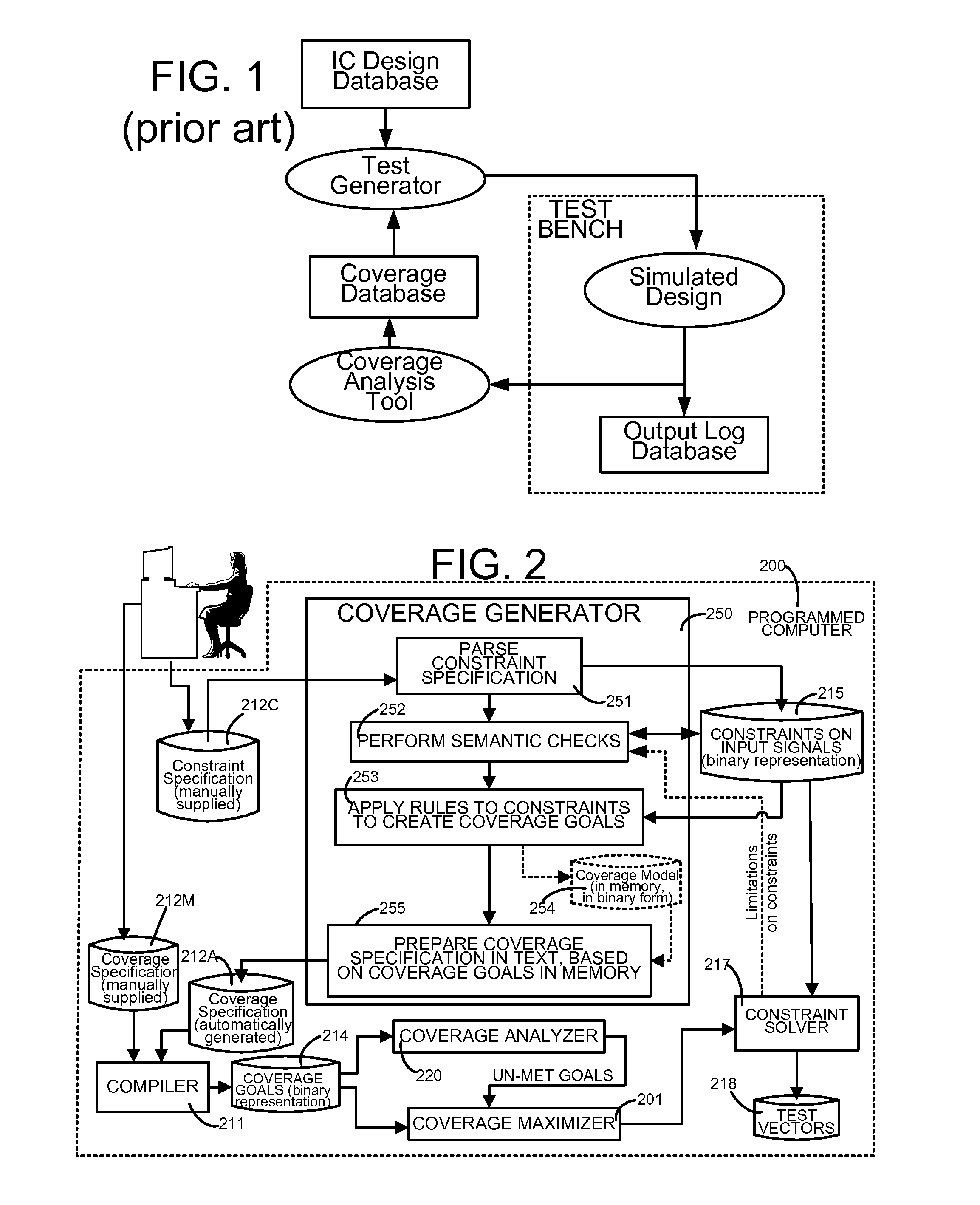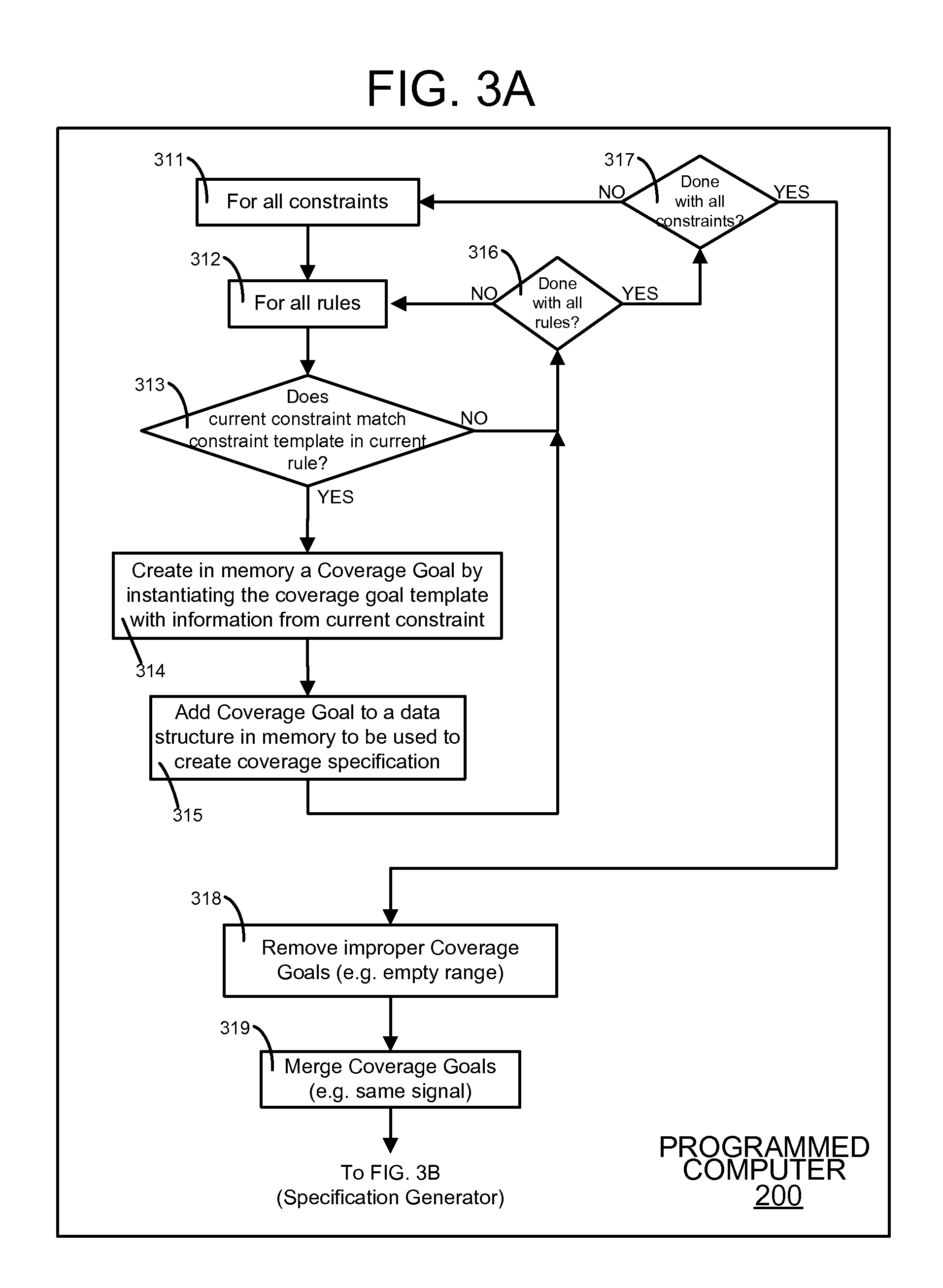Method for automatically extracting a functional coverage model from a constraint specification
a functional coverage model and constraint specification technology, applied in the field of automatic extraction of functional coverage models from constraint specifications, can solve the problems of inability to guarantee that such events will in fact occur during a limited duration, and events will occur
- Summary
- Abstract
- Description
- Claims
- Application Information
AI Technical Summary
Problems solved by technology
Method used
Image
Examples
Embodiment Construction
[0016]A computer 200 (FIG. 2) is programmed with software 250 (“coverage generator”) to read constraints on input signals of an integrated circuit (IC) design from a constraints specification file 212C, and automatically create goals for the input signals in a coverage specification file 212A. The two files are typically held in a non-volatile memory of computer 200, and in some illustrative embodiments both files are expressed in a Hardware Verification Language (HVL), such as OpenVera or System Verilog. The constraints specification file 212C is typically written manually by a person knowledgeable about the IC design that is being tested, e.g. by use of any text editor, in conformance with an appropriate Hardware Verification Language (HVL).
[0017]On receipt of the constraints specification in file 212C, computer 200 operates initially in a manner similar or identical to any prior art compiler for HVL, such as a compiler for OpenVera or SYSTEM VERILOG. Specifically, coverage genera...
PUM
 Login to View More
Login to View More Abstract
Description
Claims
Application Information
 Login to View More
Login to View More - R&D
- Intellectual Property
- Life Sciences
- Materials
- Tech Scout
- Unparalleled Data Quality
- Higher Quality Content
- 60% Fewer Hallucinations
Browse by: Latest US Patents, China's latest patents, Technical Efficacy Thesaurus, Application Domain, Technology Topic, Popular Technical Reports.
© 2025 PatSnap. All rights reserved.Legal|Privacy policy|Modern Slavery Act Transparency Statement|Sitemap|About US| Contact US: help@patsnap.com



